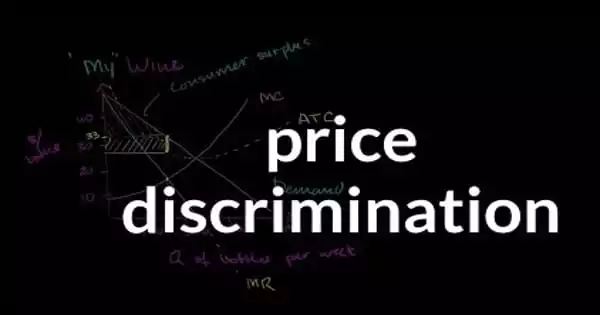Price discrimination is a pricing technique that charges consumers varying prices for identical goods or services. Discrimination is only worthwhile if the profit from splitting the markets is greater than the profit from keeping the markets united, and this will rely on the relative elasticities of demand in the submarkets. Consumers in the relatively inelastic sub-market will be charged the higher price, while those in the relatively elastic sub-market will be charged the lower price.
Price discrimination is used lawfully in a variety of ways by industries. It is unimportant that pricing information be regulated, or that price discriminating groups are ignorant that others are being charged different prices:
- Coupons:
In retail, coupons are used to differentiate clients based on their reserve price. Individuals who collect coupons are said to be more price sensitive than those who do not. A producer can charge a higher price to price-insensitive customers and a lower price to price-sensitive customers by supplying coupons.
- Premium pricing:
premium products are sold at a price that is significantly higher than their marginal cost. A ordinary cup of coffee, for example, may cost $1, whereas a premium cup of coffee may cost $2.50.
- Discounts based on occupation
Many businesses give discounts to active military personnel. This can enhance sales to the target audience while also providing positive PR for the company, leading to greater sales. Off-duty service personnel, such as police officers, are also eligible for less-publicized reductions.
- Retail incentives
These are used to improve market share or income. Rebates, bulk and quantity pricing, and seasonal reductions are among them.
- Gender-based discounts
Gender-based discounts are available in several nations, including the United States. Examples include free drinks at clubs on “Ladies Night,” and males sometimes pay less at dry cleaners and hair salons than women because women’s clothes and hair require more time to work with. Men, on the other hand, typically have higher vehicle insurance rates than women based on the chance of being in an accident depending on their age.
- Group pricing
It is the practice of splitting a market into segments and charging the same price to everyone in each sector. Examples include student and pensioner discounts, varying costs for adult and child cinema tickets, peak and off-peak charges for gas, electricity, and travel, and so on.
- Two-tiered tariff
A type of price discrimination in which the producer charges an initial cost followed by a subsequent fee for the usage of the product. Razors are an example of this, as you pay a one-time fee for the razor and then pay for replacement blades. This pricing model works because it pushes the demand curve to the right: because you already paid for the blade holder, you will buy the blades, which are now less expensive than buying a disposable razor.
Besides, financial aid is given to college students depending on their financial position and/or the financial situation of their parents. Haggling is another type of price bargaining that demands the customer’s knowledge and trust.
















